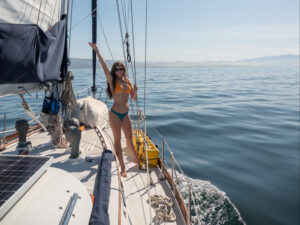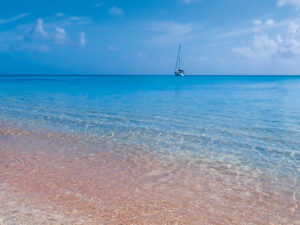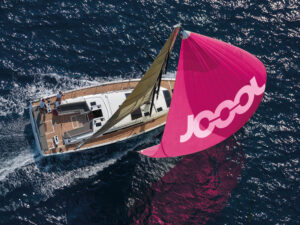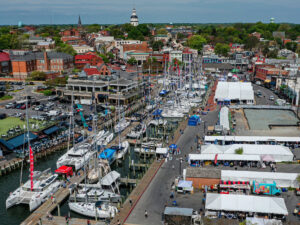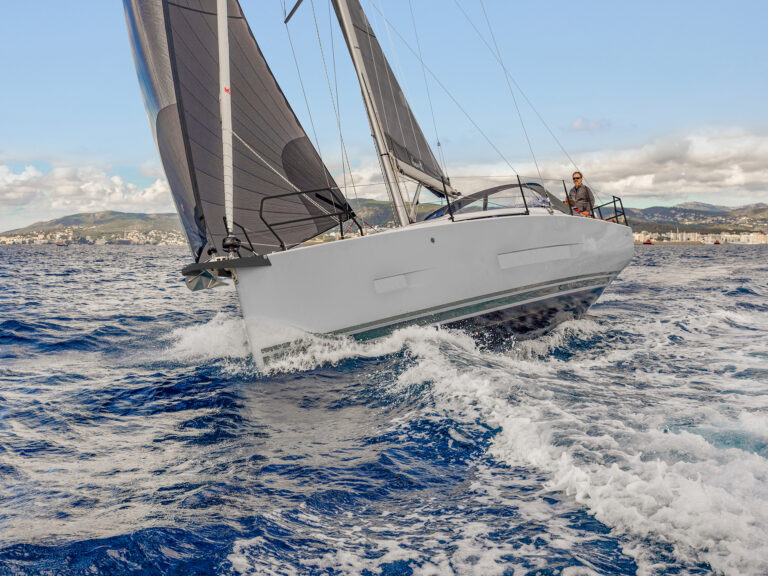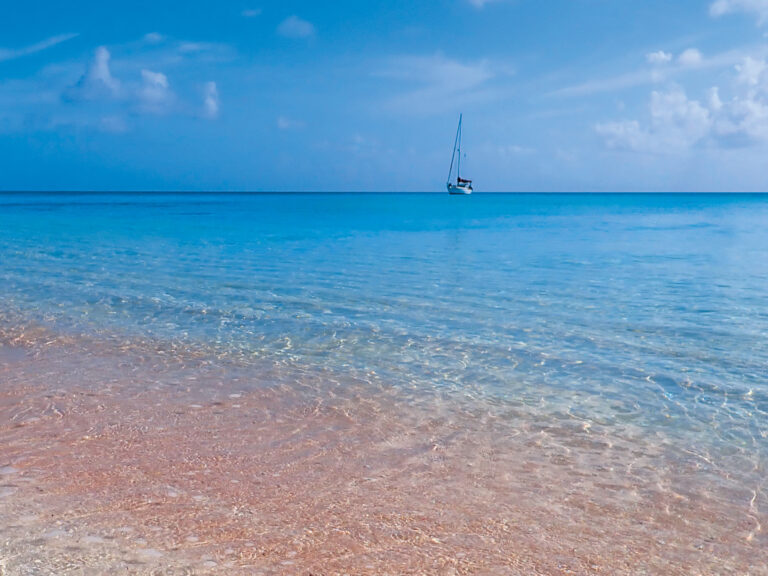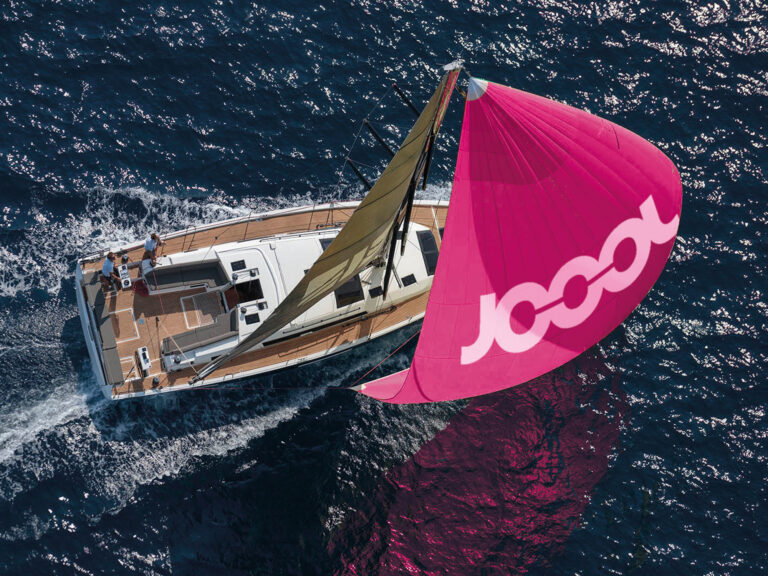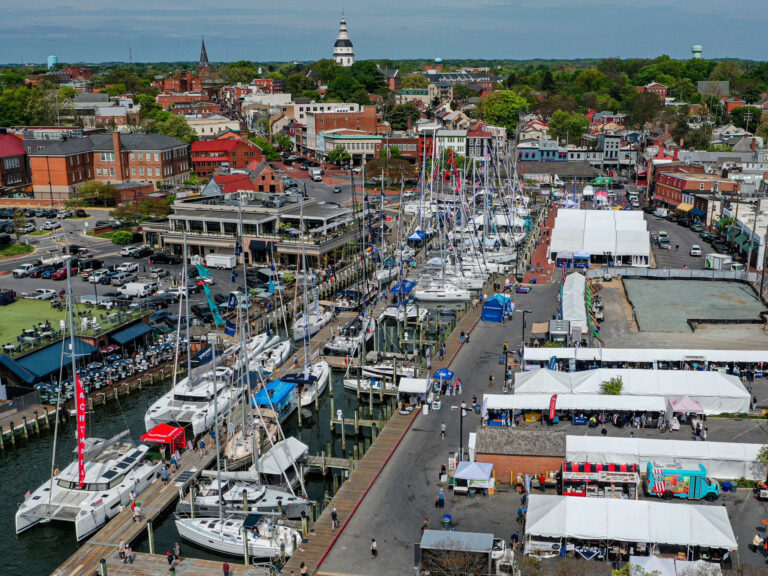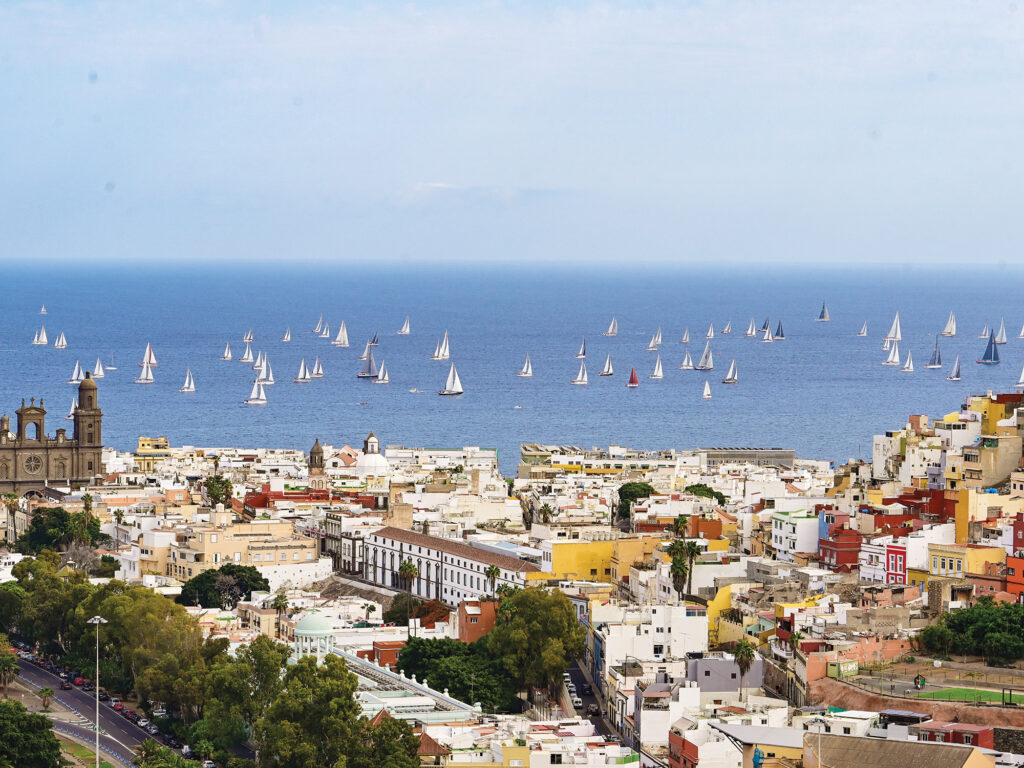
The late, great Larry Pardey—who, as a sailor, was ahead of his time in so many ways—was the most competitive cruiser I’ve ever met. Like many cruising sailors (myself included), Pardey was influenced as a young man by round-the-buoys and nearshore racing, long before he set off for distant horizons. And through the many books and articles that he co-authored with his wife, Lin, it was quite clear that he undertook the pursuit of offshore voyaging in a calculated, efficient manner. To Larry, solid seamanship was the art of sailing safely, but also quickly and efficiently, with optimal sail trim and razor-sharp maneuvers at all times. The attention to detail ensured fast passages, which were always the ideal ones.
As the Pardeys’ editor and a reader, I knew all this well before I was commissioned to write a biography of them, called As Long As It’s Fun. But in the course of my research for the book, on the waters off New Zealand, it took a few outings of actually sailing with Larry before I really got the point.
The day it was truly driven home was on an event for classic yachts called the Mahurangi Regatta. We were in the Bay of Islands aboard the Pardeys’ wooden 34-foot gaff-rigged cutter, Thelma, built in 1895. I was assigned to the mainsheet, all 130 feet of it, with nary a mainsail winch in sight. I thought I’d handled the assignment fairly well right up until the race was over, with a final jibe to the anchorage. At that point, I was fairly bushed, and in retrospect, my effort was indeed sloppy and half-hearted. Which is when Larry let me have it.
I’ve long since forgotten the exact words, but I recall the gist perfectly: If you call yourself a sailor, you stay on top of all things, at all times. It’s not only the right thing to do, it’s the respectful one. If you can’t be bothered to sail well, and effectively, go find something else to do.
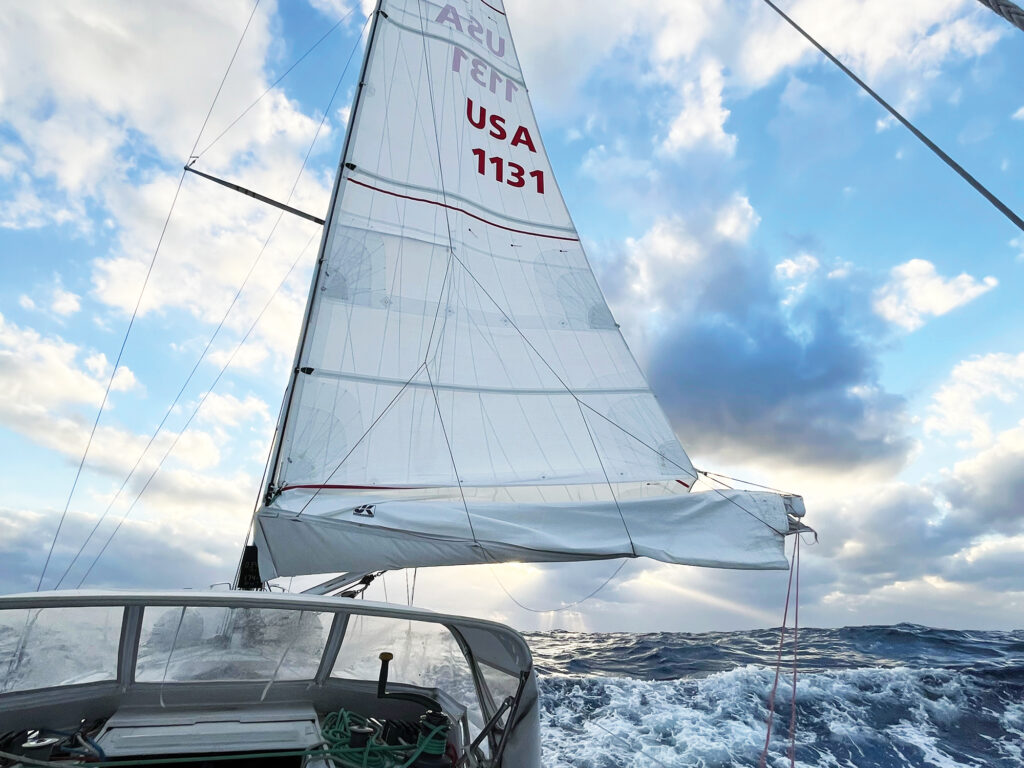
Yes, the race was finished, but the captain—the competitor—was still in charge. That was the last jibe I’ve ever really blown. Lesson learned.
Which brings me to the larger subject of competitive cruising, which I believe is a term that lends itself to modern times. Performance cruisers and speedy cruising catamarans—both of which power the contemporary sailing market—are lighter, stronger, faster and more technologically advanced, as are the sails that drive them. Connectivity is now all-oceans, which makes for better offshore forecasts and more-accurate routing. And more and more events are following the rally formula: not races, per se, but bringing like-minded sailors together in appealing venues that are social and, yes, competitive.
Don’t just take my word for it. Let’s meet some of the folks on the cutting edge of this sea change.
The Sailor
Adam Loory was an impressionable young yachting journalist (also like me) when we first crossed paths covering the America’s Cup in Australia in 1987. He found a far more interesting way home, joining seasoned cruising and racing sailors Jim and Diana Jessie for a voyage that took them first to Cyprus, and later across the Atlantic. The Jessies had commissioned their custom 48-foot Bill Lapworth design, Nalu IV, to race in the Transpac before embarking on their circumnavigation. It made for some lasting memories.
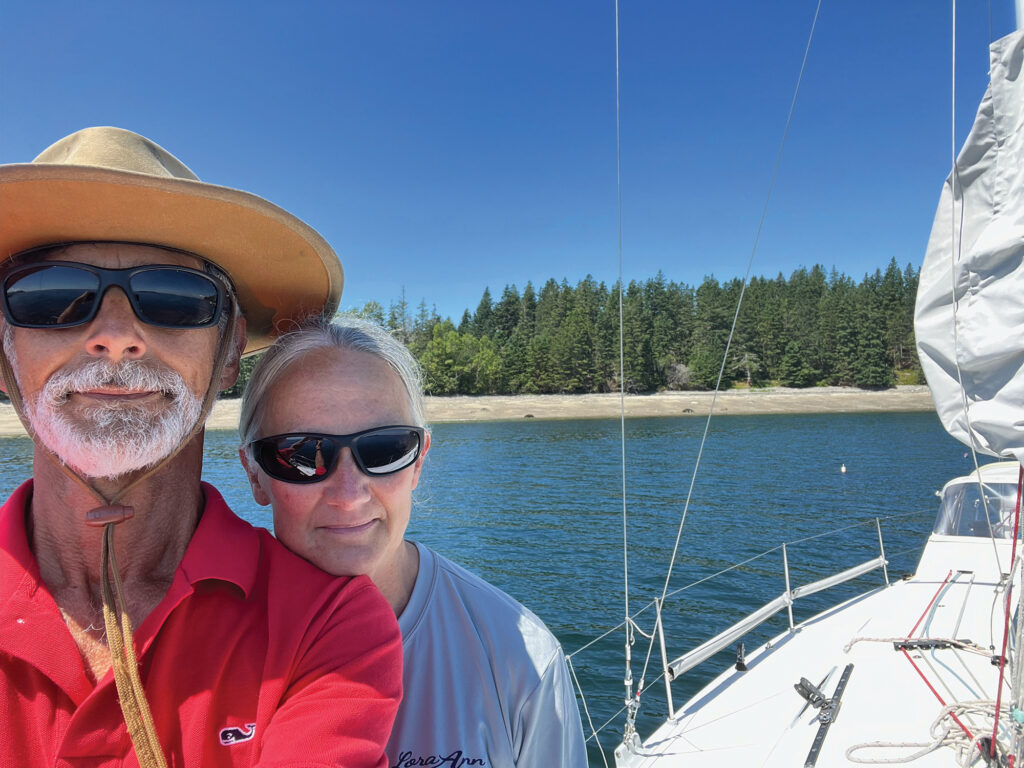
“I learned that sailing around the world is doable for mere mortals. You didn’t have to be [Joshua] Slocum or Robin Lee Graham,” Loory says. “You’ve got to pay attention and learn a lot of stuff, but it can be done. And on Nalu, we pulled off lots of 200-mile days. So, I also learned you could make tracks and didn’t need to spend all your time in the middle of the ocean.”
The Jessies were performance-oriented sailors with a quick, rangy boat that enabled their offshore goals and ambitions. Many moons later, Loory chose a similar course.
After a lengthy career as general manager at UK Sailmakers International, Loory retired to go cruising with his wife, Jenni. Over the years, he’d seriously campaigned a couple of racing boats on Long Island Sound, starting with an Express 37 before moving on to a custom Rodger Martin-designed 40-footer previously owned by renowned boatbuilder Eric Goetz. As a potential cruising boat, Soulmates hearkened back to his days on Nalu: “I knew I needed at least 40 feet of waterline and a boat that could knock off those 200-mile runs.”
That said, Soulmates needed some modifications to go cruising. The water-ballast tanks had long been removed, with their space converted for stowage (you don’t need 2,000 pounds of ballast when racing with 10 crew on the rail). Forward, a new windlass was installed, as well as a sprit for the ground tackle, to keep the anchors from banging on the plumb bow. Astern, a new Watt and Sea hydrogenerator provides 10 amps when sailing at 6 knots and 20 amps at 8 knots. A new lithium battery bank was also included in the refit.
A stint in the yard at Scarano Boat in upstate New York provided creature comforts, with the bonus of considerable weight savings. The structural work included raised cockpit coamings and a crash bulkhead in the forward ring frame. For the interior, wood accents gave the staterooms a homey feel, though the furniture itself was built of fiberglass with cored panels; even the teak-and-holly floorboards have a foam core.
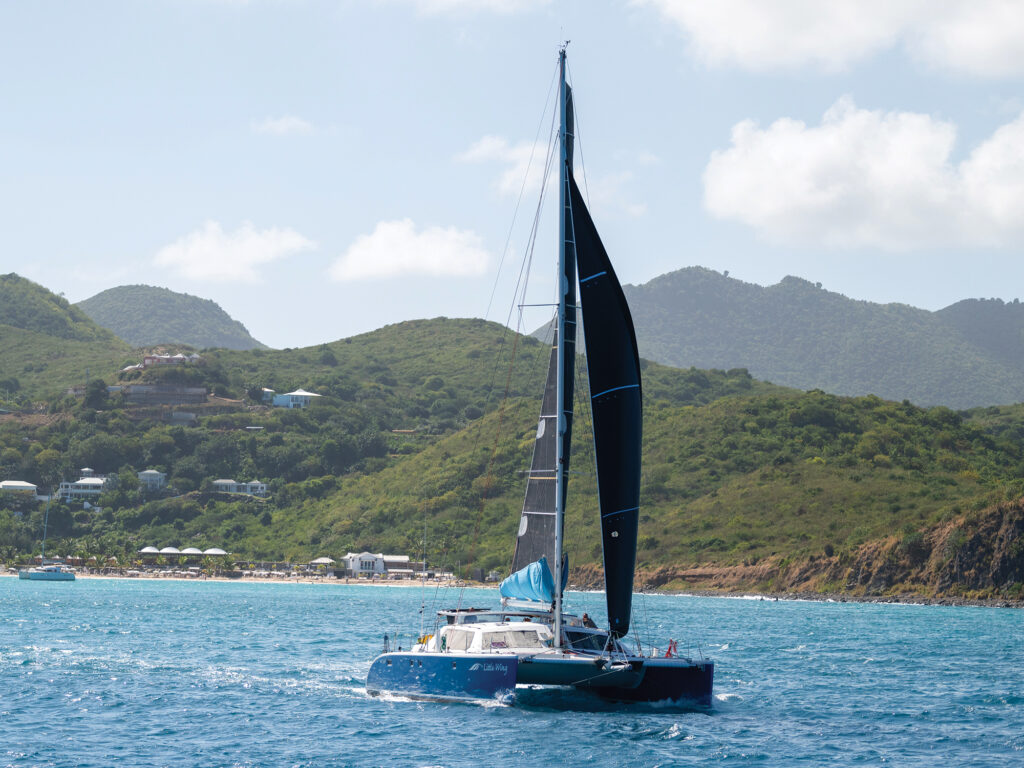
As not only a retired sailmaker but also a retired racer, Loory calls Soulmates “a terrific compromise,” one that hit 17 knots reaching across the Gulf Stream under a double-reefed main off the coast of Florida. An original plan for a circumnavigation has been scaled back, and this summer, Soulmates will head Down East to Halifax, Nova Scotia, and then north, perhaps as far as Newfoundland. Appropriately enough, his boat speaks to his soul. In the dozen years he’d owned the boat before setting out cruising, he’d sailed it only in flat, protected waters. The ocean sailing has been a revelation: “It’s just a dream to sail in waves.”
The Broker
As I learned with Larry Pardey, you get to know a lot about people when you go to sea with them, and that was again the case in 2018 when I boarded the custom 57-foot Sky for the Regata del Sol al Sol from Tampa Bay to Isla Mujeres, Mexico. I met Josh McLean, a former US Air Force navigator who was serving in the same capacity for our 450-nautical-mile passage. Almost immediately, I knew I was in the company of a kindred sailing spirit.
Prior to joining the Air Force, McLean was a boat-crazed kid who grew up sailing on the Great Lakes. As his military service was winding down, he thought that a second career in the marine industry might be a fine option, and even dabbled a bit in brokering small powerboats while still on active duty. But it wasn’t until he was out of the Air Force and had relocated to Fort Lauderdale, Florida, that he got his big break. That’s when and where he met yacht broker and naval architect David Walters, who not only sold boats, but he also built his own designs—the Cambria line of performance cruisers.
“I learned that sailing around the world is doable for mere mortals. You didn’t have to be [Joshua] Slocum or Robin Lee Graham. You’ve got to pay attention and learn a lot of stuff, but it can be done.”
Walters took McLean under his wing. Later, when Walters died, McLean took over his brokerage business, David Walters Yachts, where he remains the head honcho. “It was really great to learn under his mentorship,” McLean says. “With his eye for good designs, and his ability to put pencil to paper and really knock it out of the park with boats that looked great and sailed well, he set an example of what a yacht broker could be.”
Along with selling used boats, McLean’s company currently reps two brands with serious sailing chops: the bluewater Hylas line and the Italian-built cruiser-racers Grand Soleil. But he remains a close observer of the entire sailing market, and has strong opinions about its current state. “As modern manufacturing has evolved, and you look at some of the materials options like carbon and the different synthetics you see not only in hulls and decks, but also in the sails, the technology and design aspects have evolved, and yachts have naturally become more performance-oriented,” he says.
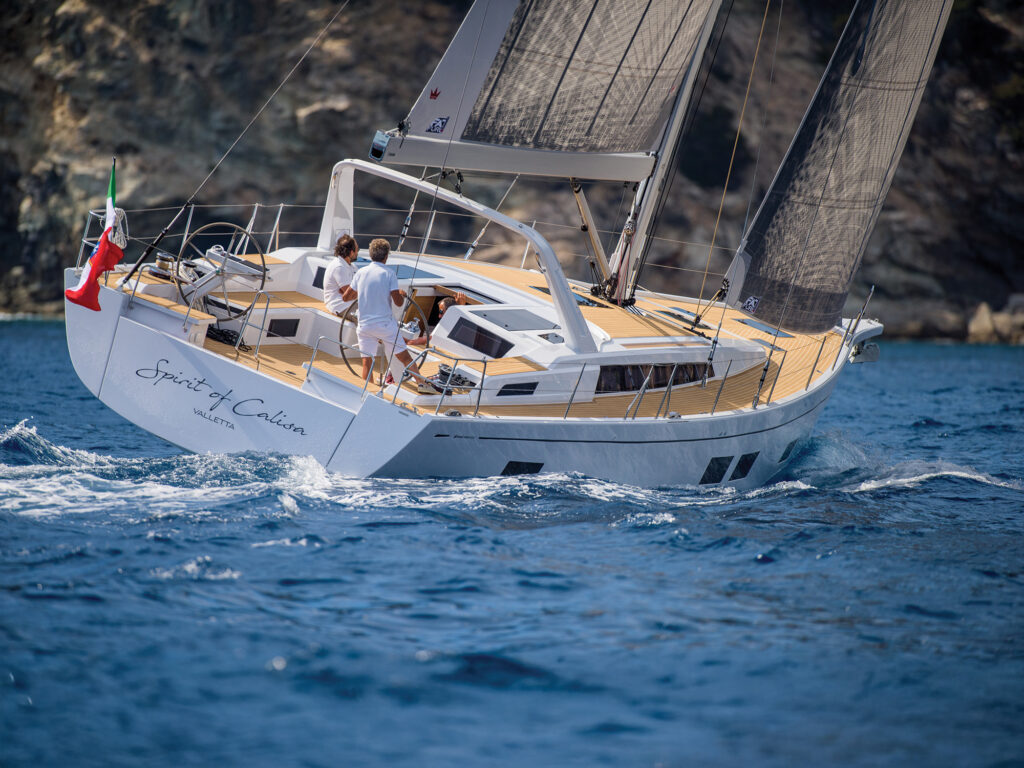
“A lot of manufacturers,” he continues, “including Hylas, Hallberg-Rassy, Oyster and Swan—which traditionally have been in that bluewater space—have started pivoting into performance designs. People like to sail fast. Even when cruising, they like to get where they’re going. And even classic production builders like Beneteau and Jeanneau, you’re seeing broader transoms, taller rigs, more sail area…. They’re edging in the same direction.”
When I asked McLean to summarize his typical client, if there is such a thing, his answer surprised me: “More and more people come to us with an idea of what they want to experience with the boat, not necessarily with a specific brand or model in mind. A lot of the time, we’re in touch with people a couple of years in advance of their purchase, as their dream kind of evolves.” And, once again, some level of competition is often part of the package.
“There are more ‘commuter’ cruisers out there, who may not have months at a time to go sailing,” he says. “So, the destination becomes more important. And you see more races, like Annapolis to Newport, that cater to cruising classes. And the boats are more dual-purpose. You do the race with your pals, and once that’s over, you put the cushions back on and enjoy the cruising lifestyle on a New England cruise with your family. They want a boat that can maximize your miles and everything else. So, it’s got to perform well. Limited time requires a better-performing boat.”
The Promoter
Before he retired to the island of St. Maarten and found a second calling among a trio of islanders who created and run the annual Caribbean Multihull Challenge Race and Rally, Steve Burzon was a high-powered Manhattan advertising executive who, in his spare time, was a passionate sailor. Burzon was a member of the New York Yacht Club and occasionally participated in its summer race weeks, but at heart he was a cruiser, and the best times aboard his Swan 411, Albireo, were on trips to Maine or offshore forays to Bermuda and the sunny Caribe.
“The rally and the time trials really give everyone the opportunity to meet one another and have some fun. I think that’s why we’re seeing it growing. It’s about the sailing and the sailors.”
So, he certainly had the proper mindset to help run an event like the CMC, which celebrated its seventh running this past winter in support of the growing numbers of catamarans in the sailboat segment. The CMC, however, is evolving in an interesting and unexpected way. Two years ago, the organizers introduced a cruising rally to the festivities. Last year, the number of new rally entries surpassed those of the larger racing boats. One fun component of the rally venue, which takes the fleet from St. Maarten to Anguilla to St. Barts—basically a cruise in company—is the time trials. In fact, the top performer in the event’s recent running was a well-sailed Leopard 50 from Puerto Rico called La Novia, which has switched from the racing fleet to the rally one.
“It’s important to recognize that this is not a race. It’s for cruisers,” Burzon says. “A lot of cruisers don’t want to race because their insurance rates go up or they need to bring in crew. With the rally, there’s not a bunch of boats crashing a starting line to get a favorable spot. The time trials are a form of competition, but not against one another. It’s a race against time. You’re competing only against the clock.
“It’s a parade start,” he continues. “You get an assigned time to set off, and we take your time when you leave. We have handicap ratings for the boats, so it’s not just a matter of who is sailing the biggest boat. On the legs from St. Maarten to St. Barts and back, it’s basically a test of straight-line speed, on a power reach. But from St. Maarten to Marigot, you get a little bit of everything: upwind work, reaching, downwind sailing, all the points of sail. You have to succeed in all aspects. You’ve got to be good at everything. Those La Novia guys proved that. They’re really good sailors.”
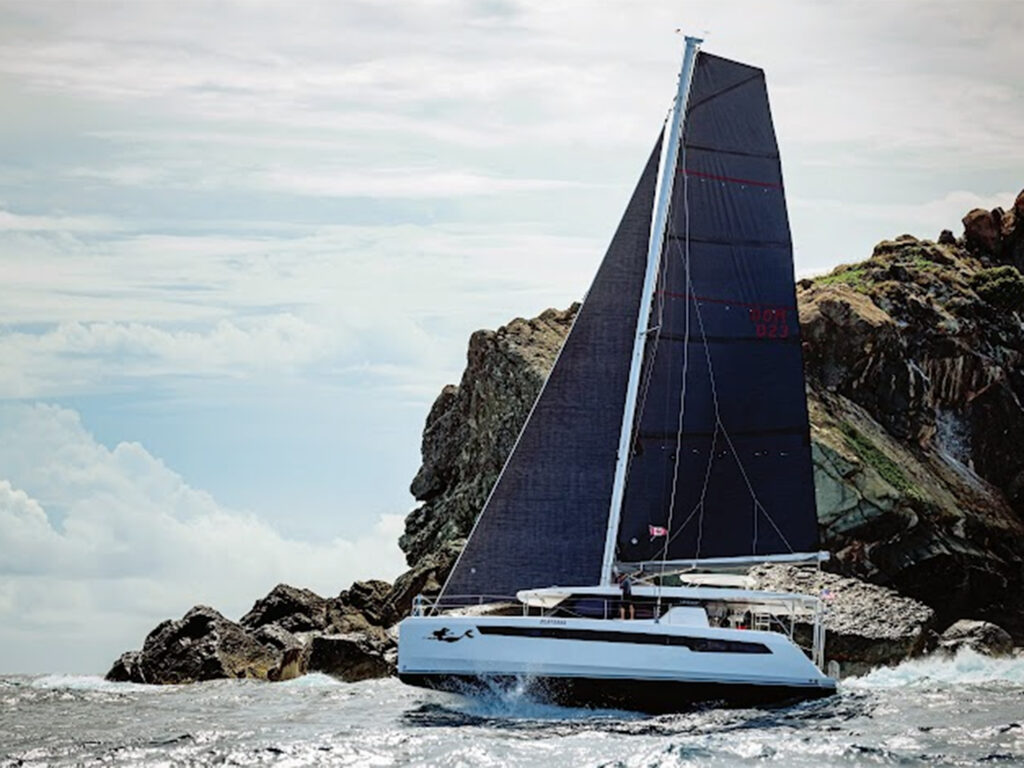
And, at the end of the day, just like an actual race, there are bragging rights to be had. “When you’re cruising like I used to, you’re sort of by yourself,” he says. “You pull into a harbor, go for a swim, hang out with your family or your crew. You don’t normally hop in your dinghy and pop over to the boat next door. But the rally and the time trials really give everyone the opportunity to meet one another and have some fun. I think that’s why we’re seeing it growing. It’s about the sailing and the sailors.”
The Organizer
British sailor and author Jimmy Cornell pioneered the idea of grand ocean-crossing rallies back in the 1980s. In the intervening decades, the concept has exploded. The Salty Dawg Sailing Association runs its own full calendar of events; so do brands such as Oyster, with its continuing series of the Oyster World Rally, with one currently underway and another scheduled for 2028-29. But Cornell’s original World Cruising Club started it all and is still going strong, and its annual ARC Rally—the Atlantic Rally for Cruisers—remains its signature event.
These days, the club’s managing director is Paul Tetlow, who earned his sailing chops aboard a variety of boats and related expeditions during his years in the British military. As the organizer of the ARC, he acknowledges that competition plays a role in the proceedings, even among the die-hard cruisers.
“It’s a broad fleet with many varied interests, backgrounds and motivations,” he says. “Out of 150 boats and almost 1,000 people, we’re quite a broad church. Within that large group, there are lots of subsets, whether it’s the doublehanded crew, the family crew or the all-boys crew. We have racing divisions as well, so it’s a real different mix of motivations.
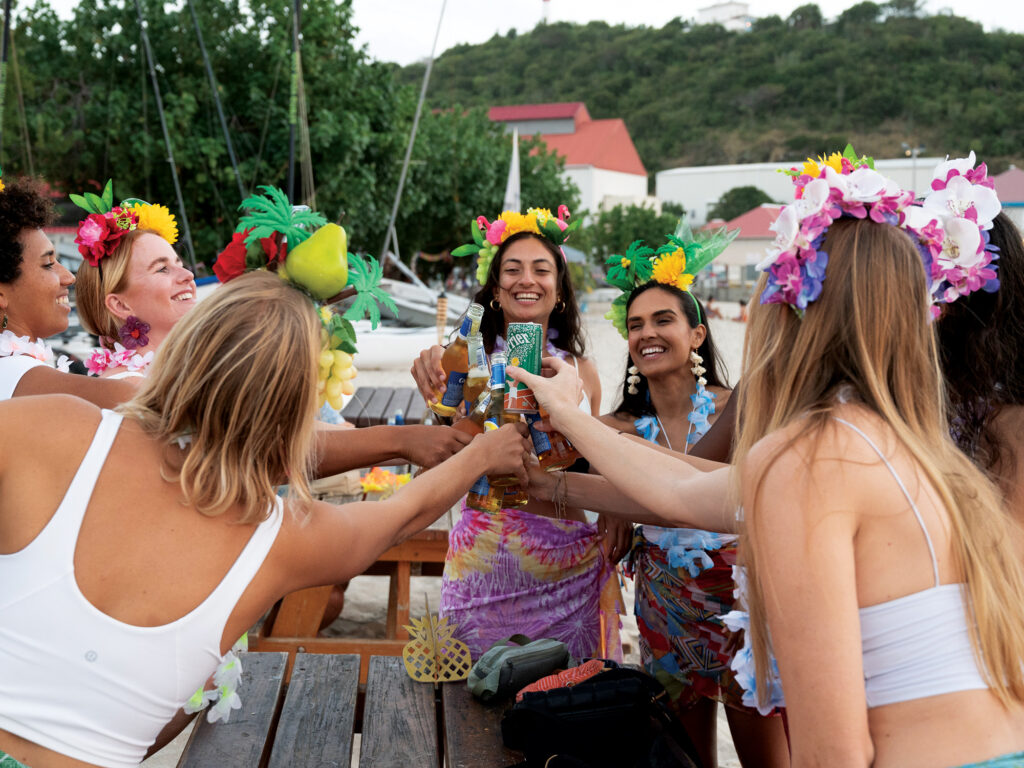
“That includes the offshore cruiser who is motivated by performing well and the fact that they’re among other boats and can mark their performance,” he adds, “either formally through a racing system or just by looking at the daily positions—which, informally, encourages them to sail well and get the most out of their boat’s performance.”
Of course, as the old saw goes, whenever any two boats are alongside, on whatever piece of water, they’re racing. I ask Tetlow: Once his fleet was underway, did the cruisers suddenly adopt a competitive streak?
“Yes,” he says with a laugh. “We warn people about that. We have a system and a process where we engage the boats to make sure we’ve got the data required to calculate a time-correction factor. If they’re at all interested in competition—and some don’t become interested until they’re actually crossing the Atlantic, and they develop a bit more of a competitive edge—we have the numbers to enter into it.
“I think having a competitive side to a cruising rally is probably a very healthy thing,” he adds. “It makes people really focus on getting the best performance out of their boat and crew without taking any unnecessary risks.”
At the close of each ARC, prizes are awarded to every category and division, racer and cruiser alike. And Tetlow’s closing thoughts can apply to any sailor, no matter the level of intensity, at the close of any passage: “We want to celebrate success. We want everyone to be safe and have fun.”

